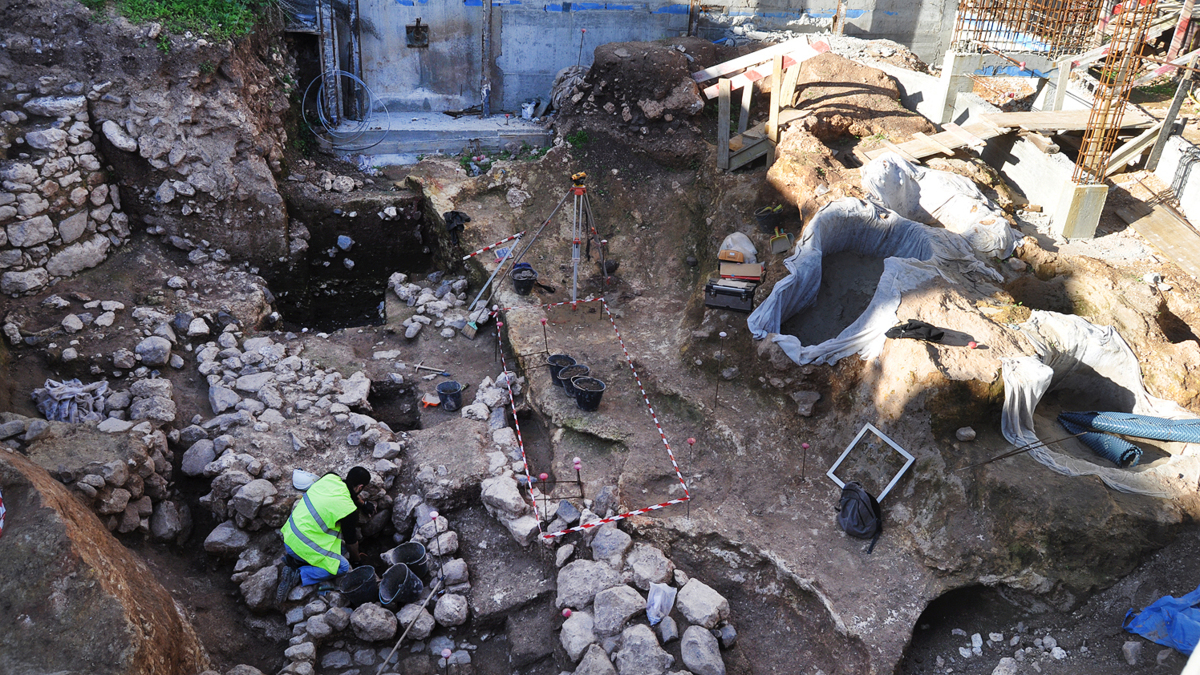Hospital Gave False Information to Health Minister About Pregnant Patient
Amadora-Sintra Hospital provided incorrect information to the Minister of Health about Umo Cani, a 36-year-old Guinean woman who died one day before her daughter. Obstetricians assure that protocols were followed, despite the "high obstetric risk".

At 36 years old, Umo Cani was expecting her fourth child: a girl. Guinean, she had lived in Portugal for at least a year and had her situation regularized in the country. Her husband, Braima Seidi, lives in Guinea-Bissau with their three children—the youngest is four years old—but Umo counted on the help of her sister-in-law, with whom she lived and who accompanied her to all appointments during the pregnancy.
One day after mild hypertension was detected in Umo Cani during an obstetrics consultation at Hospital Fernando Fonseca (Amadora-Sintra), the sister-in-law asked for help, but when the Agualva-Cacém firefighters arrived, the pregnant woman was already in cardiorespiratory arrest that could not be reversed, not even with the arrival of the Emergency and Resuscitation Medical Vehicle (VMER), nor at the hospital.
The baby, born six minutes after the mother entered Amadora-Sintra unconscious, was still alive when, in Parliament, the Minister of Health assured that Umo Cani "had not had follow-up until the date she first entered Amadora-Sintra Hospital already at 38 weeks" of gestation. On November 1, the same day Umo Cani's baby died, the statements proved false. The president of the hospital's Board of Administration, Carlos Sá, assumed responsibility for the failure in information about the pregnant woman's follow-up since July in the National Health Service (SNS) and presented his resignation this Monday. The minister accepted it, recognizing that the information she had conveyed "was not the complete information" and that the situation was a "serious failure."
The family awaits the results of ongoing investigations but is considering moving forward with legal action.
Due to the absence of a fully integrated clinical information system, which allows automatic sharing of data and medical records between different services and units […], only today in the late afternoon was it possible to verify that the user had been under follow-up in the primary healthcare of ULSASI since July 2025, at the Personalized Healthcare Unit (UCSP) of Agualva.
Amadora-Sintra Local Health Unit
Pregnant Woman Was Followed at Health Center Since July
According to the family, Umo Cani had been in Portugal for about a year. Documents disclosed by the family on social media detail that she had her situation regularized in Portugal through a residence authorization for citizens of the Community of Portuguese Language Countries (CPLP). Issued on December 27, 2024, it was valid until December 24, 2025.
At 20 weeks of pregnancy, Umo Cani was seen for the first time at the Personalized Healthcare Unit (UCSP) of Agualva on July 14. On August 6, she had the second-trimester ultrasound; on the 14th of that month, she was seen again at the health center and referred to Hospital Fernando Fonseca for "high obstetric risk," reveals her Pregnant Woman's Health Bulletin, also shown by the family.
The first consultation at Amadora-Sintra Hospital took place on September 17 and the second on October 29. Paloma Mendes, a family friend, told the press that on this last one, Umo and her sister-in-law were there from noon to 6 p.m. On this day, mild hypertension was detected—140/90, Diogo Bruno, director of the obstetrics service at Amadora-Sintra, would detail—and the pregnant woman underwent several tests that ruled out pre-eclampsia. "According to the clinical protocol, the user was then referred internally to the Obstetrics Emergency, where, after performing several complementary diagnostic exams, she was discharged with an indication for hospitalization at 39 weeks of gestation," the hospital indicated.
Umo Cani's Pregnant Woman's Health Bulletin refers that hospitalization in the obstetrics ward was scheduled for November 13. But mother and daughter died before.
Umo Cani's medical history did not arrive complete and correct to Ana Paula Martins in the morning before the hearing before the deputies of the Health and Finance Committees, in the afternoon. The Minister of Health relied only on the data shared by the hospital, which were not complete, says Amadora-Sintra, due to the "absence of a fully integrated clinical information system, which allows automatic sharing of data and medical records between different services and units."

How Is Referral Between Health Units Done?
But how does the transmission of clinical information work, and is it possible that the doctors who treated Umo Cani at the hospital did not know she was followed in the SNS? In cases similar to that of the 36-year-old pregnant woman, when some factor is detected that motivates changing the risk assessment, primary healthcare centers or hospitals have the possibility to refer the user so that they start being seen by another entity. The system responsible for referrals is called RSE SIGA and is currently overseen by the Ministry of Health: before, it was operated by an external supplier. Additionally, the pregnant woman holds her Health Bulletin, where "the results of all exams and all ultrasounds" are detailed, details Sara do Vale, president of the Portuguese Association for Women's Rights in Pregnancy and Childbirth (APDMGP).
Xavier Barreto explains to Observador that there is not necessarily a form to be filled out by doctors when referring a user. "It is the primary care physician who, in essence, chooses the information or decides what to write in the [referral] request," notes the president of the Portuguese Association of Hospital Administrators (APAH), clarifying that they seek to say "who the patient is, what problems they have, what medications they are taking."
There is no guideline indicating the type of information to include in this request, but there is the capacity for dialogue between the two units to get to the bottom of the issue. "All requests [that arrive] at the hospital are reviewed by a doctor: the medical triager," adds the APAH responsible. This healthcare professional "reads all the requests and decides if the patient is urgent or not urgent," but also to which doctor, within the hospital itself, the appointment should be scheduled, "who has more capacity or knowledge to treat that specific condition." But if what is in the request is not sufficient to answer all these questions, "the doctor can ask for more information," something that happens with "some frequency," according to Xavier Barreto.
Thus, when the user arrives at the new health unit where they will be followed, the respective doctors already have all the information considered relevant by the professionals who provided the follow-up. However, if they want to know more data, any SNS doctor has the possibility to check a patient's history in a health unit different from the one where they are being treated.
For example, in Umo Cani's case, a doctor at Hospital Fernando Fonseca could consult the information existing about the pregnant woman in the database corresponding to the Agualva-Cacém health center, where she was seen before the hospital. In this consultation, they could have access to the full results of all exams and tests done there.
For Xavier Barreto, with the existence of a "single clinical process," which resulted in a single database for all SNS units, "all this would be facilitated." "It would be much more efficient and would even have more quality if the database were the same and if all the information available about the patient were available on both sides," he adds.
The president of the Portuguese Society of Obstetrics and Maternal-Fetal Medicine dismisses the possibility that the doctor who examined Umo did not have access to the Guinean pregnant woman's clinical information. "In principle, everything will be there in the computer system, yes. I don't know what happened in this specific case," he admits to Observador.
History of Pregnancies with Complications and the Hypertension Episode That Raised Alarms
The photographs of Umo Cani's health bulletin disclosed by the family show that two of her children were born premature, and that when she had twins, one died at birth. None of the pregnancies were interrupted, nor did she have ectopic pregnancies. When she went to the Agualva-Cacém health center for the first time on July 14, no suspicions were raised. It was only on the second, exactly one month later and when her blood pressure was 129/75, that she was assigned the degree of "high-risk" pregnancy: it is not known what else justified this decision. When questioned, Amadora-Sintra Hospital did not respond in time.
The sister-in-law, in her several statements to the Portuguese media, said that Umo Cani was healthy and had no previously diagnosed health problems. The husband reinforced this idea to CNN Portugal, referring that the hypertension identified in the last consultation she would have never manifested in the other pregnancies or in her daily life.
When on October 29 mild hypertension was verified at Hospital Fernando Fonseca, Umo Cani was transferred to the emergency room for additional tests that did not detect problems such as pre-eclampsia. The 36-year-old pregnant woman was discharged, with an indication to be hospitalized at 39 weeks.
In cases of hypertension in pregnant women, "first, it is confirmed [the hypertension], because sometimes they come up the stairs, blood pressure is measured and the values are high, but then, after 10 minutes, the blood pressure returns to normal," explains obstetrician Diogo Ayres de Campos. "Confirming high blood pressure, an analytical test is done, to the blood, and it is seen how the function of the liver, kidney, etc. is. If everything is normal, we rule out pre-eclampsia, which continues to require surveillance, but it is not necessary to end the pregnancy," he tells Observador.
When a pregnant woman has episodes of high blood pressure, the scenario of pre-eclampsia is the most dramatic for doctors. If the test results indicate this condition, the obstetric specialist consulted by Observador adds that hospitalization is done and labor is induced. In this case, with no indications of a condition with this severity, hospitalization was scheduled at 39 weeks.
Diogo Ayres de Campos indicates that, given the record of hypertension, the history of premature births and even the death of a baby at birth does not change the approach: "There are risk pregnancies that worry us a lot and others happen because the person is a little overweight or are of advanced age. It is not black or white, it is a scale of gray," he adds.

Obstetrician Nuno Clode admits that it may not have been the hypertension episode that led to her death. "It could have been a heart attack, pulmonary edema, amniotic fluid embolism. It may have nothing to do with hypertension, because cardiorespiratory arrest in pregnancy has a very reserved prognosis," he adds.
With no reason according to the clinical protocol to hospitalize the 38-week pregnant woman, Umo was discharged and returned home. Something with which Sara do Vale disagrees: "A person who has high blood pressure or low blood pressure or any type of pathology, being a full-term pregnant woman, should have stayed, period. If not in the delivery room, under observation, at least hospitalized," maintains the president of the Portuguese Association for Women's Rights in Pregnancy and Childbirth. "Being her a person with a risk pregnancy, she should have CTGs and consultations every week."
The deaths of Umo Cani and her daughter are being investigated by the Public Ministry, the General Inspection of Health Activities (IGAS) and the Health Regulatory Entity (ERS, in a joint inquiry) and by Amadora-Sintra Hospital.















Comments
Join Our Community
Sign up to share your thoughts, engage with others, and become part of our growing community.
No comments yet
Be the first to share your thoughts and start the conversation!